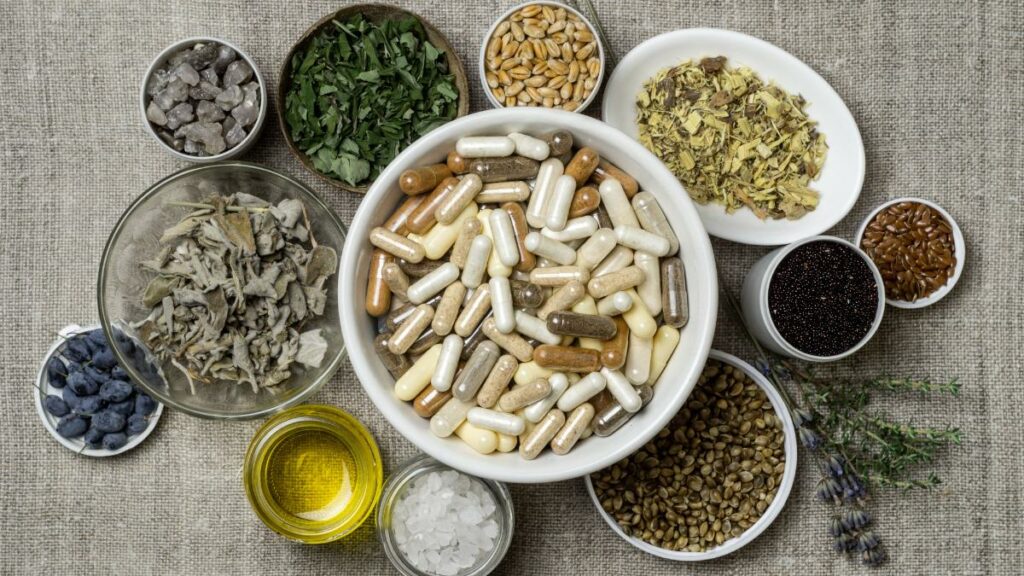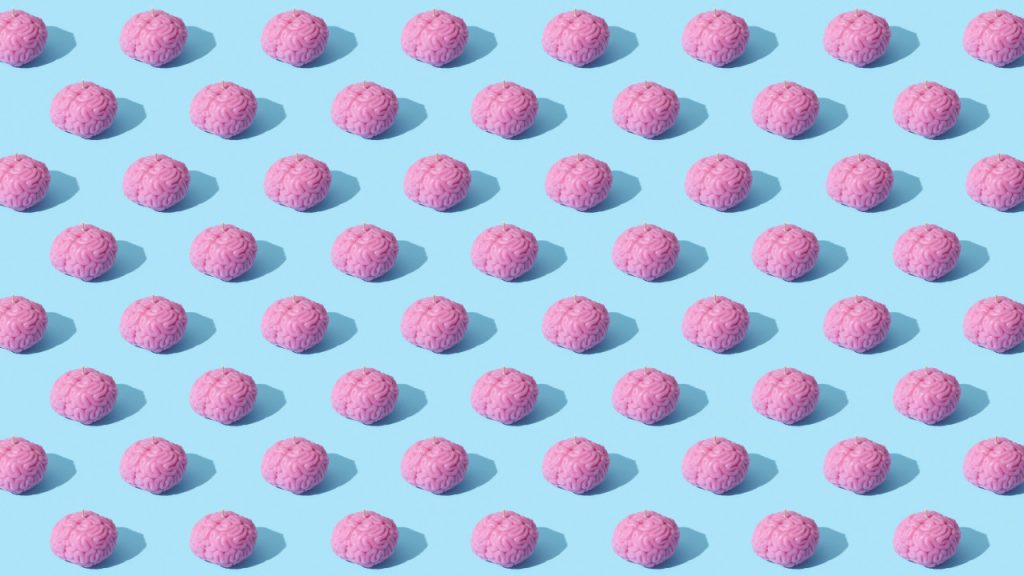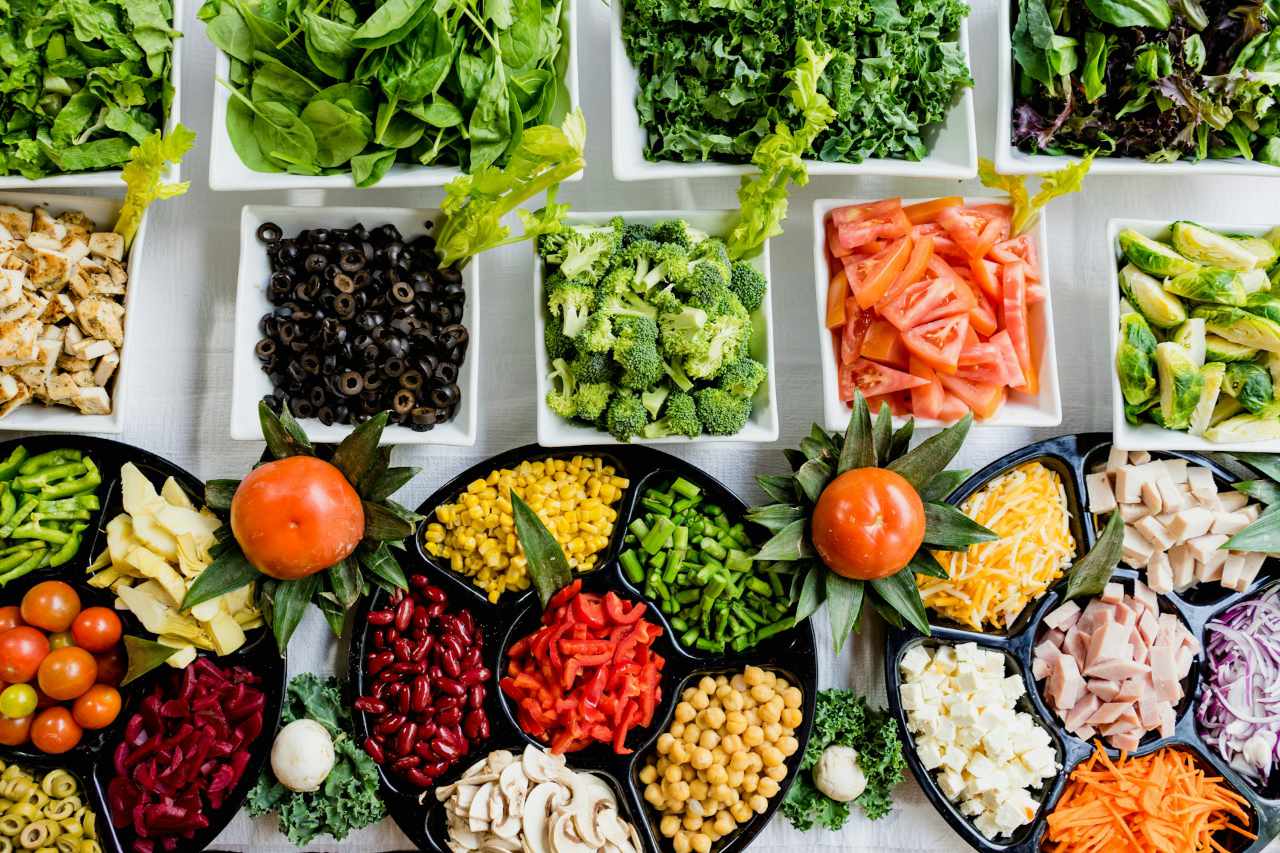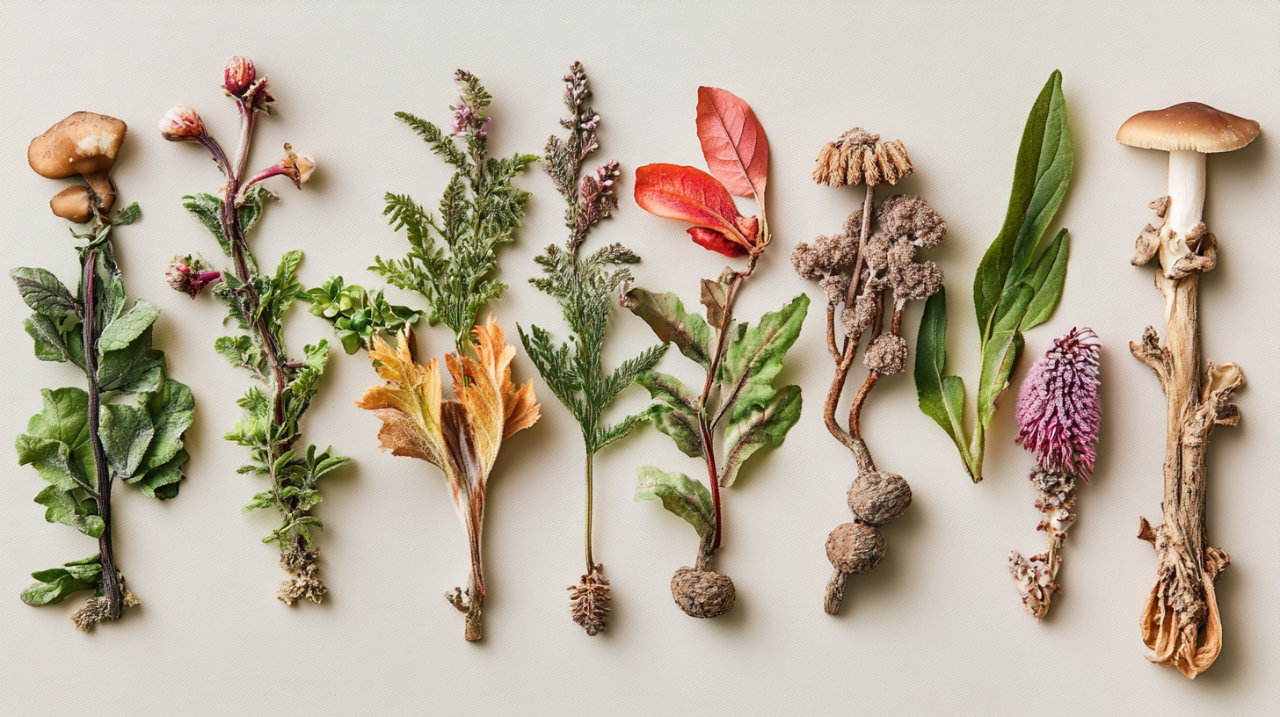To make it in the modern world you’ll need to rely on your brain to pay attention when required, motivate you towards the right goals, strengthen your reserve in the face of distractions, and manage an internal workspace to solve different problems.
We all struggle with some of these challenges at points in life, perhaps more so these days with the number of distractions available and tasks on our to-do lists.
But those with ADHD (Attention Deficit Hyperactivity Disorder) have to live in a constant battle with them so we must build daily mindful habits or we will always be distracted.
ADHD is a neurodevelopmental disorder characterized by patterns of inattention, hyperactivity, and impulsivity, that impede on daily functioning and quality of life. Everything from school, work, and social interactions suffer from it.
As with most brain-related issues, it’s a complex problem that we haven’t discovered a root cause of or a perfect solution to. But one thing we know is that the dopamine system plays a crucial role and a number of healthy daily habits can naturally boost dopamine in the ADHD brain.
Whenever anybody manages to maintain their attention long enough to achieve what they truly want, dopamine is to thank. So surely we’d all want more of it, right?
Understanding Dopamine, Habits And Rewards
There used to be a popular opinion that dopamine produced feelings of pleasure once we achieved something, but that’s proven inaccurate.
There are several distinct dopamine pathways tracing their way through the brain, and they play a part in everything from motor control to executive function, but one of the most significant aspects of dopamine is its role in motivation.
It’s not the reward you get after success, it’s the thing that pushes you towards success. Without dopamine we’d be uninterested and immobile.
But things don’t necessarily go so well even when we do have it—dopamine is at the root of addiction. When you crave something, whether coffee or drugs or games or food, dopamine is at play.
Dopamine is a finite resource. Once you’ve used up what you have, it takes time to replenish it. When you’re addicted to something, you don’t like this waiting period, as the crash in dopamine levels can leave you lethargic and depressed.
So when you’re trying to think of how to increase dopamine, don’t be lured by quick fixes, they backfire.
Ideal Levels of Dopamine
It’s important to note that there are two significant states or levels of dopamine to consider:
The tonic or baseline: the general level of dopamine circulating through your brain, released over large areas covering many neurons, and is more stable over time.
If you’re a generally enthusiastic and motivated person, you likely have a high baseline. If you’re more mellow and calm, you probably have a lower baseline.
The phasic peaks: result from networks of individual neurons releasing dopamine into tiny gaps called synapses, causing temporary bursts of activity that typify communication between neurons.
Whenever you engage in a highly desirable activity—eating chocolate, scrolling social media, playing a video game—you get a sharp rise in dopamine, but a drop will follow, and that drop will sink below the baseline you began at. Don’t chase quick fixes.
The Right Type of Motivation
The enjoyment you get pursuing certain goals and outcomes is largely a function of the difference between the tonic and phasic levels.
If you get a few peaks from a video game, you’ll soon be down, and the only thing you’ll feel like doing is to keep playing the game in the hope of another high. That lowered baseline will put you off other activities, making them seem dull in comparison.
If what you want is to be motivated and focused over longer periods of time, and capable of directing that motivation towards healthy goals and tasks, you don’t want the short-lived highs, you want a gradual and sustained rise.
Fortunately, there are many natural and effective ways of achieving this.
10 Daily Habits That Will Naturally Boost Dopamine
For those with ADHD, a doctor will often recommend medications that act on the dopaminergic system like Adderall or Ritalin (this is not medical advice and if your doctor recommends a medication you should follow their directives).
However, there are natural ways to increase dopamine that can be used in conjunction with the medications or on their own, to benefit those struggling with inattention or trying to maximize their cognitive abilities.
1. Exercise

The habit of daily physical activity, including both aerobic exercises and strength training, can boost dopamine production and release.
One review of the effects of exercise on the brain found dopamine levels remain above baseline for up to two hours after the workout ends.
They also found that taking dopamine reuptake inhibitors (leaving more dopamine circulating the brain and binding with other neurons) tends to enhance endurance during exercise, increasing the amount of time people work out.
Additionally, they suggest that dopamine is at least partly responsible for the improvement in cognitive function after exercise, while other research shows that aerobic exercise alleviates symptoms of major depressive disorder and ADHD.
2. Meditation

Different forms of meditation and breathing exercises can promote dopamine levels while also boosting physical and mental well-being.
A review of research on transcendental meditation found it decreases stress and anxiety by reducing cortisol and norepinephrine, and increases feelings of pleasure and well-being through an increase in dopamine and serotonin.
Another study found a 65% increase in endogenous dopamine release in the ventral striatum during Yoga Nidra meditation.
Focused attention meditation activates the mesolimbic dopamine system, raising tonic dopamine levels, and even helping experienced meditators learn from feedback (dopamine has been implicated in how the brain forms predictions and adjusts in response to errors).
Those who practise meditation often speak to its ability to improve attention and clarity of mind. Backing that claim up, a number of studies suggest meditation can improve ADHD symptoms.
Meditation doesn’t need to be done formally and sitting down. My favourite daily ADHD habit is mindful walking outside in the forest.
3. Music

Your favourite tunes can evoke positive emotions and memories, which increase dopamine levels.
Several studies have found music evokes activity in mesolimbic structures and promotes dopamine release, another pointed to music as a tool to help those with PTSD by acting on the dopaminergic system.
Music therapy is also often used to help people with ADHD, and as we’ll explore further in the ‘creative projects’ section, playing instruments and making music can be immensely beneficial.
But it is worth noting that music can be a source of distraction when you need to concentrate on something else. When that’s the case, it’s better to find simple music without any lyrics, such as binaural beats and isochronic tones.
Binaural beats and isochronic tones are audio signals that contain subtle beating patterns which encourage your brain waves to synchronise with them, what’s known as ‘brainwave entrainment’.
There is evidence binaural beats can boost attention and memory, help reduce anxiety, reduce the experience of pain, and some preliminary research suggests it can also improve ADHD symptoms.
So get a good pair of headphones and make listening to instrumental music a daily habit.
4. Whole Food Diet

You are what you eat, and all the proteins and neurotransmitters required to keep your brain healthy and running smoothly depend on what you gobble up during the day.
There are 20 amino acids that form the building blocks of all the proteins your body needs. When it comes to dopamine, the amino acid you most require is tyrosine.
Tyrosine is the precursor to dopamine and can be found in foods like almonds, avocados, eggs, fish, chicken, and bananas.
One study found that those with a higher intake of tyrosine performed better across a range of cognitive performance markers, including episodic memory, working memory, and fluid intelligence, while another implicated it in convergent or “deep” thinking.
Your gut microbiota also plays a role in dopamine regulation, suggesting probiotics can be another decent way of naturally increasing dopamine.
Sweets and chocolate can increase dopamine substantially, but it’s a very transient experience—the peak will die off into a crash in a matter of minutes. Meanwhile, a few studies suggest that diets high in saturated fat appear to disrupt the proper functioning of the dopamine system.
5. Morning Sunlight

Sunlight is a necessity in maintaining mental and physical health, and getting some early in the morning has shown to be very effective at everything from improving our mood, sleep, attention, immune system, and strengthening our bones.
Stanford neuroscientist Andrew Huberman suggests early morning sunlight provides a jolt of cortisol that helps regulate our circadian clock, which even starts preparing us for a better sleep later that night.
Changes in dopamine due to light exposure is one of the culprits behind seasonal affective disorder (SAD), which is a feeling of depression and fatigue that generally strikes in the winter months when sunlight is in short supply.
Relatedly, try to remove bright light exposure between 10 pm and 4 am—and this includes screens—as it can disrupt quality sleep and leave you suffering the following day.
6. Creative Projects

Projects and activities like drawing, painting, crafts, writing, or playing a musical instrument, have the potential to boost dopamine and lower the prevalence of stress hormones like cortisol.
They’re generally activities that are intrinsically motivating, which makes them apt for inducing flow states when we’re properly immersed in them.
Flow has been found to increase activity in dopaminergic pathways, and given the link between dopamine and motivation that shouldn’t come as a surprise.
Plus, as we accomplish new goals, reach new heights, and feel a sense of improvement that inevitably comes with practising new skills, we’ll activate the brain’s reward system and prompt dopamine release.
But whatever you do, don’t add rewards. Artistic pursuits should remain an intrinsically motivated activity, adding external incentives can corrupt the pleasure of engaging in the activity.
In a now classic study, children who originally participated in a drawing activity for the joy of it were subsequently offered a reward, but what happened when the rewards stopped coming? They stopped doing what at first they did for free.
7. Nootropics and Herbal Supplements

A number of different herbs and supplements have been suggested to increase dopamine levels. These include:
- Rhodiola rosea, which is also known as golden root. Some research shows it can reduce stress and depression while improving mood, help alleviate symptoms of fatigue, while a meta-analysis concluded there are significant benefits for learning and memory. Many of these effects likely involve the dopaminergic system.
- Ginkgo biloba has been found to improve cognitive function, likely through dopamine activity in the prefrontal cortex. Another study found that an extract from ginkgo biloba (EGb 761) offered neuroprotective effects through the regulation of dopamine genes.
- Curcumin is the active ingredient in turmeric, and a few different studies have suggested it acts on both dopamine and serotonin systems, offering strong antidepressant effects.
- Yerba mate is often consumed as a drink (simply called ‘mate’) that’s widely appreciated in South American nations Uruguay, Paraguay, and Argentina. It contains caffeine and some research suggests it helps protect dopaminergic neurons.
- Mucuna pruriens contains high levels of L-dopa, the precursor to dopamine, and has been used to help those with Parkinson’s, but is fast acting and will likely result in a crash, so use sparingly.
8. Group Flow

When we spend time with close friends and family, fostering positive relationships, the brain rewards us with pleasant releases of a number of feel-good chemicals, including dopamine, oxytocin, serotonin, and endorphins.
This makes sense—we are social creatures, driven to connect with others. Our ability to communicate and cooperate as we do is arguably the most distinguishing feature of homo sapiens.
When it comes to bonding with others, oxytocin is the neurotransmitter that will come to most people’s minds (it’s often called the ‘love hormone’), but dopamine plays its part too—in fact, oxytocin and social connection stimulate the dopamine pathway.
Closely connected to social situations, laughter and humour stimulate dopamine release. So if you ever needed more reasons to spend time with friends, enjoy basking in a healthy dopamine release and the cognitive advantages that follow.
9. Cold Water Immersion

While it might make you uncomfortable, a cold dip in the shower or bath has been shown to increase dopamine levels by as much as 250%, that’s on par with cocaine.
However, rather than a peak and crash as you’ll find with cocaine, the effects of cold water immersion are long-lasting, taking up to 3 hours to return to baseline—long after you’ve left the water.
Cold water immersion can also increase metabolic rate by 350%, aids in post-workout recovery, and the willpower needed to push through the discomfort can improve your resilience to other stressors.
Given it’s what most people have the easiest access to, a cold shower might be your best shot, but If you have a bathtub you’ll be able to immerse yourself up to your neck for an extended period of time.
Some people choose to take a dip in a cold lake or the sea, but this takes a little care as you have no control over the temperature or the environmental elements which can pose other threats.
The optimal temperature will vary depending on your preferences and the time you plan on immersing yourself, but be aware that there are risks from extremely cold water so you will want to build a tolerance before going too far.
Try starting with something between 50°F (10°C) and 68°F (20°C), where you feel the cold but that you also know you can tolerate. You can gradually reduce the temperature as you adapt to it.
10. Sleep Hygiene

Sleep is critical to good health in many ways, and as anyone that’s ever done an all-nighter would know, we desperately need it to keep our mental machinery operating at its peak.
Getting the right amount of quality sleep each night is crucial for your body’s ability to regulate dopamine effectively.
This is very much in line with the point about light exposure. Dopamine fluctuates with our circadian rhythm, we get large amounts in the morning after a good sleep, and less in the evenings when we’re not far off another slumber—unless we disrupt it.
Dopamine systems suffer when our sleeping patterns degrade. You need good sleep hygiene—don’t use your devices late at night and avoid bright lights, don’t drink coffee or other stimulants too late in the day, and exercise regularly but in the earlier hours.
Establishing the daily habit of proper sleep hygiene is one of the most important habits you can build to naturally boost dopamine and improve your ADHD symptoms.
Daily Habits Transform The ADHD Brain
Clearly, there are a number of ways to increase dopamine, and the ones mentioned here will do a better job than the quick hits (and crashes) you’ll get from chocolate, games, smoking, or other similar activities and substances.
What you should keep in mind is that the best results tend to come when you find a way to enjoy and desire the process itself, rather than the end result.
For example, enjoy the run more than crossing the finish line. Or find some joy in cooking instead of just consuming the meal.
You can often achieve this by reframing and reinterpreting the activity. Find some aspect of it you enjoy or appreciate and focus on that.
So if you suffer from ADHD, or you struggle to keep your mind sharp and on task during the day—take a cold dip, go for a run, call on a friend, or engage in another pursuit that’s known to produce longer-lasting increases in dopamine. You’ll thank your brain afterwards.
- 10 Tips, Tricks And Tools To Overcome ADHD Paralysis - March 19, 2025
- 10 Interesting Facts About Adult ADHD And Mental Health - March 18, 2025
- 15 Ways To Manage ADHD Without Meds By Biohacking Dopamine - February 14, 2025




